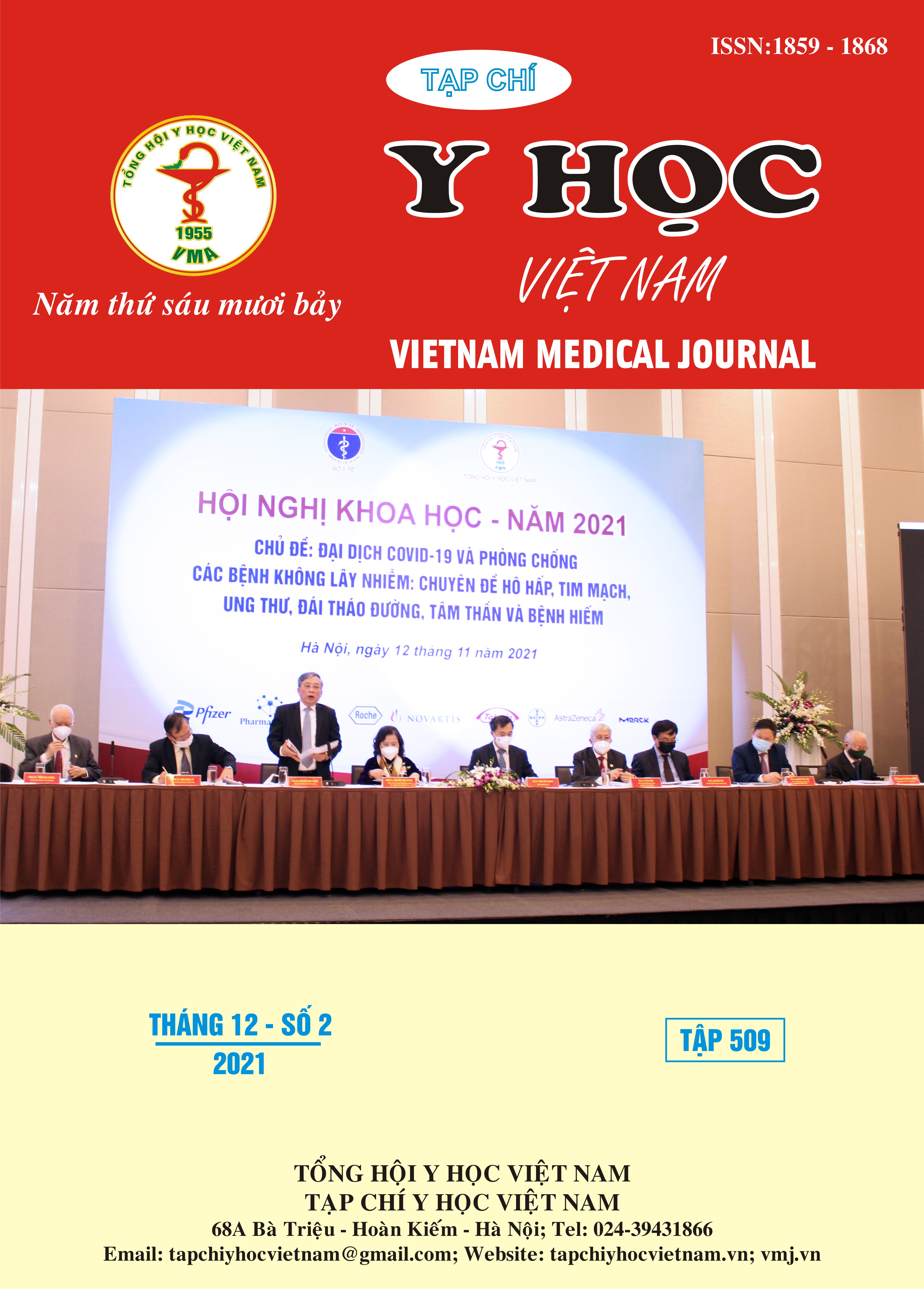SOME CLINICAL CHARACTERISTICS IN PATIENTS WITH LOSS OF ELBOW FLEXION WHO UNDERWENT TENDON TRANSFER SURGERY BY STEINDLER FLEXORPLASTY
Main Article Content
Abstract
Objectives: To study some clinical characteristics in patients with loss of elbow flexion who underwent tendon transfer surgery by Steindler Flexorplasty. Subjects and methods: All patients were fully satisfied, including 90 patients recovering elbow flexion by Steindler Flexorplasty at Military Institute of Trauma and Orthopedics, 108 Central Military Hospital. research profile. Assess the general characteristics of the patient in terms of age, gender, cause and mechanism of injury, characteristics of motor nerve damage, the strength of elbow flexor before surgery. Results: The average age of the study patients was 31.3 ± 11.4 years old, the damage of elbow flexion mainly occurred in men. The most common cause of loss of elbow flexion is damage to the motor nerve causing loss of function of the biceps and forearms due to traffic accidents (84.4%); the main mechanism of injury was trauma, causing stretch (94.4%). Lesions mainly occur on the left side (55.6%), nerve damage detected by clinical examination alone was the main (90%), the main lesion was type II lesions (70.0%). Before surgery, the strength of the elbow flexor muscle of the study group was mainly M0 (87.7%). Conclusion: Elbow flexion injury occurs mainly in men of working age; the main cause of loss of elbow flexion was traffic accidents due to the mechanism of injury-causing stretch. Detecting loss of elbow flexion injury mainly by clinical examination, most patients were completely paralyzed before surgery.
Article Details
Keywords
Loss of elbow flexion, tendon transfer surgery, Steindler Flexoplasty
References
2. T. J. Quick, A. K. Singh, M. Fox, M. Sinisi, A. MacQuillan (2016) “A quantitative assessment of the functional recovery of flexion of the elbow after nerve transfer in patients with a brachial plexus injury”, Bone Joint J, 98-B, pp. 517.
3. Alnot JY, Abols Y (1984), “Réanimation de la flexion du coudepar transferts tendineux dans les paralysies du plexus brachial de l'adulte”, Rev Chir Orthop, pp. 313-323.
4. Rühmann O, Schmolke S, Gosse F, Wirth CJ (2002), “Transposition of local muscles to restore elbow flexion in brachial plexus palsy”, Injury, pp. 597-609.
5. Monreal R (2007), “Steindler Flexorplasty to restore elbow flexion in C5-C6-C7 brachial plexus palsy type”, J of brachial plexus and peripheral nerve injury, Pages 1-12.
6. Akira Wiberg, Michael Ng, Yasser Al Omran, Fidel Alfaro-Almagro, Pual McCathy, Jonathan Marchini, David L.Bennett, Stephen Smith, Gwenaëlle Douaud and Dominic Furniss (2019) “Handedness, language areas and neuropsychiatric diseases: insights from brain imaging and genetics”. J Brain, pp. 2938.
7. Brunelli GA, Vigasiol A, Brunelli GR (1995), “Modified Steindler procedure for elbow flexion restoration”, J Hand Surg (16-A), pp. 743-746.
8. Brunelli GA, Brunelli GR (1991), “A fourth type of brachial plexus lesion: The intermediate (C7) palsy”, J Hand Surg (16-B), pp. 492-495.


